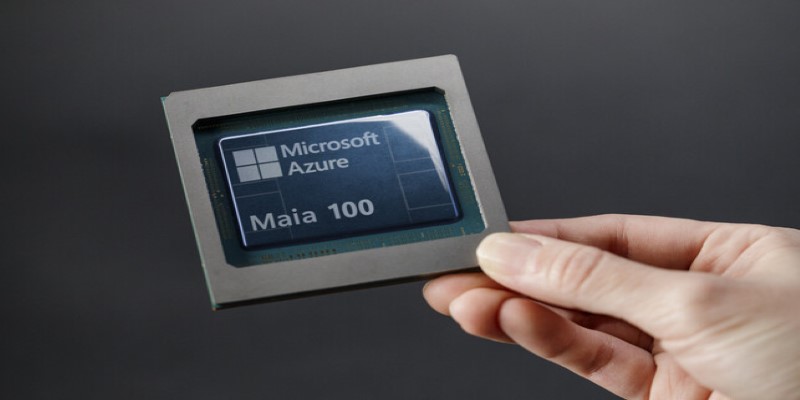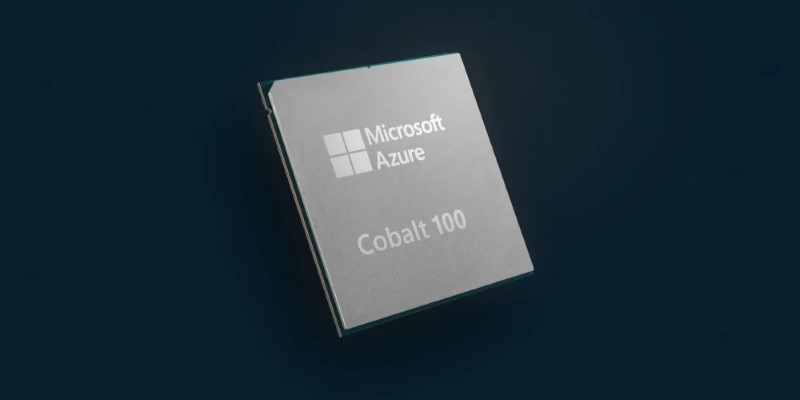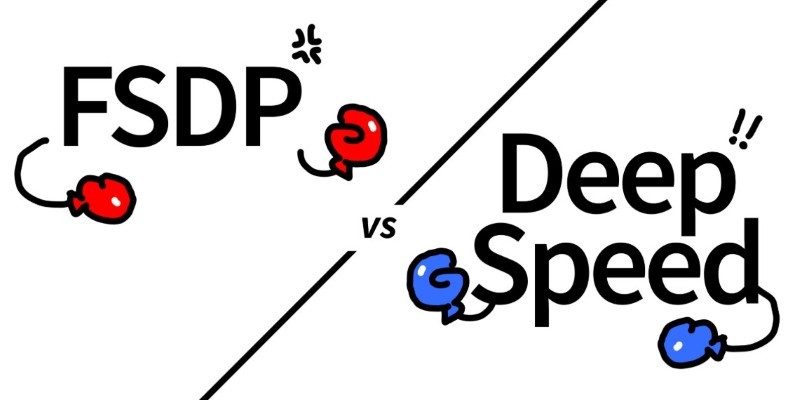Advertisement
Microsoft has formally joined the custom chip ranks with the release of its first internally developed processors: the Maia 100 and the Cobalt CPU. The chips are specifically designed to meet Microsoft's increasing infrastructure demands, particularly for cloud services and AI. They won't be found in consumer desktops or off-the-shelf enterprise hardware. Rather, they are the backbone of Azure data centers, where performance, scalability, and efficiency inform every decision.
This is a long-term change. Rather than depending on third-party chipmakers for high-performance hardware, Microsoft is developing its silicon to have hardware and software work in lockstep. The payoff is a more integrated system better suited to satisfy in-house performance requirements without sacrificing control of the entire compute stack.

Maia 100 is Microsoft’s first custom silicon specifically engineered for artificial intelligence tasks. Built for scale, this chip is tuned for the demands of training and running large AI models—particularly those that require enormous amounts of computation across thousands of parameters.
The chip contains 105 billion transistors, putting it among the most complex chips developed to date. Its architecture focuses on accelerating the types of operations common in deep learning: matrix multiplication, tensor operations, and parallel data handling. These are the foundation of modern AI models, from image generation to natural language processing.
Maia’s role is not just about raw speed; it’s about minimizing the delays between memory access and compute execution. To this end, the chip uses high-bandwidth memory modules and a custom protocol that improves how data flows inside the system. These features reduce bottlenecks and allow models to train faster and more efficiently.
This isn’t theoretical. Maia 100 is already being used to run some of Microsoft’s AI workloads inside Azure. It supports inference for services like Azure OpenAI and helps accelerate model training behind tools such as Copilot. Microsoft designed the chip to align directly with the specific needs of these systems, making the most of available resources and minimizing overhead.

The Cobalt CPU is a custom processor built for the day-to-day computing needs of Microsoft’s cloud environment. While Maia handles AI, Cobalt supports the wider infrastructure—everything from virtual machines to containers, databases, and back-end services that keep Azure running smoothly.
Cobalt is based on Arm architecture, a choice that reflects Microsoft’s focus on efficiency and performance per watt. The 128-core processor is designed to handle many operations in parallel, which is ideal for the kinds of workloads that modern cloud systems face.
This chip doesn’t aim to break speed records. Instead, it’s built for predictability and resource balance. It runs at a frequency optimized for sustained load, making it a better fit for continuous-use scenarios like hosting applications, running microservices, and supporting internal infrastructure components.
Cobalt’s development reflects Microsoft’s deeper involvement in customizing every layer of its systems. The chip is already operational within Azure and contributes to improving the responsiveness of core services while reducing energy use. It also allows for better tuning across Microsoft’s own operating systems and cloud orchestration tools, ensuring tight coordination between what the chip is doing and what the software expects.
Bringing chip development in-house wasn’t a branding move—it was a calculated decision based on operational needs. As Microsoft scaled its AI capabilities and expanded Azure’s global presence, the limitations of general-purpose chips became more apparent. In particular, AI workloads created an urgent need for customized solutions.
Performance was one key reason. Off-the-shelf chips are designed to meet broad market demands, which often means compromise. By designing chips for specific workloads, Microsoft ensures better performance across its most critical services.
Cost and availability also played a part. Third-party chips, especially those made for AI, have surged in price and become harder to source reliably. Creating its silicon gives Microsoft a more predictable path forward in terms of pricing, production timelines, and deployment logistics.
Control was equally important. When Microsoft controls both the hardware and software, it can plan features with greater precision. It can adjust firmware, optimize resource usage, and implement power-saving strategies directly—without waiting for an external vendor to issue a patch or design update.
This is not about cutting ties with chipmakers. Microsoft still works closely with partners like AMD, Intel, and NVIDIA. But by adding its own options, it gains flexibility and independence at a time when computing demands are increasing rapidly.
Maia 100 and Cobalt CPU are being used inside Microsoft’s data centers, powering services that millions of people and businesses interact with daily. The chips are not being sold directly to other companies, nor are they intended for devices outside Microsoft’s control.
Instead, they’re deployed in systems like Azure Maia, a custom rack-level configuration built to house and cool the Maia 100 chips. This system includes specialized networking, power distribution, and cooling technology. It’s designed not just for speed but for balance—ensuring that chips operate at peak performance without overheating or consuming unnecessary power.
This level of internal integration allows Microsoft to monitor system performance more closely. If something underperforms or an opportunity arises to improve efficiency, engineers can address it quickly across both software and hardware. It shortens the feedback loop and accelerates future iterations of both chips and the services they support.
For end users, this translates into faster, more consistent performance. Whether you’re generating text through an AI assistant, analyzing large datasets, or running business-critical applications on Azure, you benefit from the fact that Microsoft’s hardware and software are developed to work seamlessly together.
The launch of the Maia 100 and Cobalt CPU isn’t just a technical achievement—it’s a strategic move that puts Microsoft on a more self-reliant path. As AI and cloud services become more central to how we work, communicate, and compute, owning the infrastructure becomes more than a luxury. It becomes a necessity.
With Maia and Cobalt, Microsoft has created hardware that reflects the needs of its own systems rather than the broad compromises of the open market. These chips allow the company to refine performance, improve efficiency, and maintain a competitive edge in delivering AI and cloud capabilities.
Advertisement

Learn how to use ChatGPT for customer service to improve efficiency, handle FAQs, and deliver 24/7 support at scale

How Hugging Face Accelerate works with FSDP and DeepSpeed to streamline large-scale model training. Learn the differences, strengths, and real-world use cases of each backend

How the ORDER BY clause in SQL helps organize query results by sorting data using columns, expressions, and aliases. Improve your SQL sorting techniques with this practical guide

Artificial Superintelligence represents a stage where machines surpass human intellect in creativity, logic, and awareness. Learn how this emerging form of intelligence could transform science, society, and the way humans define consciousness in a rapidly evolving world

How Amazon is using AI to fight fraud across its marketplace. Learn how AI-driven systems detect fake sellers, suspicious transactions, and refund scams to enhance Amazon fraud prevention

Is the UK ready for AI’s energy demands? With rising power use, outdated cooling, and grid strain, the pressure on data centers is mounting—and sustainability may be the first casualty

Explore how generative AI transforms content, design, healthcare, and code development with practical tools and use cases

How to Integrate AI in a Physical Environment through a clear, step-by-step process. This guide explains how to connect data, sensors, and software to create intelligent spaces that adapt, learn, and improve over time

Can a robotic puppy really help ease dementia symptoms? Investors think so—$6.1M says it’s more than a gimmick. Here’s how this soft, silent companion is quietly transforming eldercare

Learn different ways of executing shell commands with Python using tools like os, subprocess, and pexpect. Get practical examples and understand where each method fits best

What happens when an automaker lets driverless cars loose on public roads? Nissan is testing that out in Japan with its latest AI-powered autonomous driving system

Learn everything about Stable Diffusion, a leading AI model for text-to-image generation. Understand how it works, what it can do, and how people are using it today